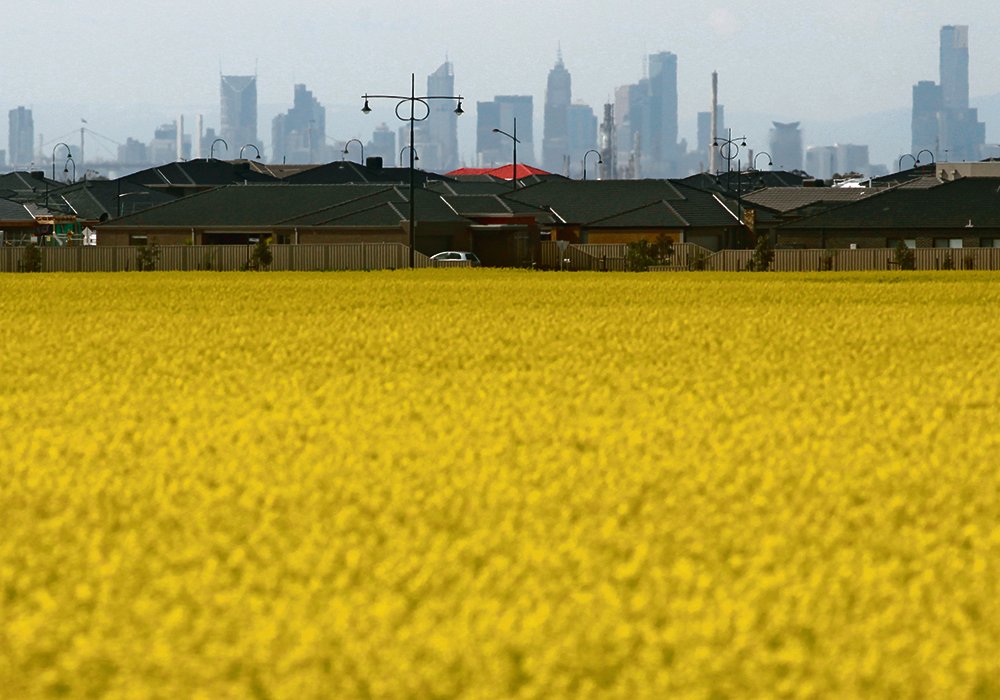Australian farmers sidestep Chinese tariff hit with record canola crop

SYDNEY/SINGAPORE, (Reuters) – When top barley buyer China last year slapped tariffs of more than 80 percent on imports from Australia amid a bilateral spat, grain farmers Down Under could have been forgiven for fearing tough times ahead.
But a switch to canola, combined with ideal growing conditions and near record prices for the yellow-flowering oilseed, have proved a boom for farmers as they prepare for a second consecutive year of a bumper grain harvest.
Better known for its wheat and barley, Australia is forecast to harvest a record canola crop of more than 5 million tonnes this season, according to government data.
“When you lose your biggest market you need to find alternatives,” said Lyndon Mickel, a grains farmer in export-focussed Western Australia.
Analysts and traders expect Australian farmers to increase the acreage dedicated to canola in the coming years due to strong global demand, especially if barley prices remain depressed by the Chinese tariffs.
“The prices are so phenomenal, growers will be tempted to switch more over to canola next year if they can,” said AAAX general manager of trading and marketing James Foulsham.
Canola is crushed to make oil, used in food products and as a biofuel as well as protein-rich meals to fatten animals, with about three-quarters of Australia’s exports going to the European Union.
Higher Australian canola output comes at a time of tight global edible oil supplies and rising crude oil prices, which drove prices of palm oil, the most widely used vegetable oil, to a record high this week.
Australia is set to play a significant role in the export market for canola – also known as rapeseed – accounting for just under one third of the world trade estimated at 14.21 million tonnes in 2021/22.
The nation is expected to ship more than 4 million tonnes in 2021/22, up from 3.1 million tonnes a year earlier.
The first canola truckloads for the season have been sent to port storage weeks earlier than usual after warm and wet growing conditions lifted yields, especially in Western Australia.
“We are trying to prioritise getting the canola off first because of the value in it,” said Levis MacKenzie, a farm manager at Viridis Ag’s The Grange farm in Western Australia.
He said the farm added an extra “couple thousand hectares of canola” during the planting window due to high prices.
While canola prices were already strong during the Australian planting window early in the year, they have since climbed to record levels due to a drought affecting top producer, Canada.
November canola contracts there have gained more than 70 percent this year to trade over CDN$900 per tonne. At the start of 2020, prices were below CDN$500.
Demand for Australian canola is so strong that some farmers have started forward selling next year’s crop at CDN$738 – CDN$785 a tonne, one Australian-based analyst told Reuters, compared with average prices of CDN$462 a tonne.
This season’s anticipated strong harvest, forecast to deliver the country’s second biggest ever wheat take, comes just when Australia needs it, with an extended lockdown in the country’s two biggest cities disrupting the economic recovery.
BARLEY TRADE Australia’s agricultural sector was forced to reassess its crop and export options after China imposed tariff duties totalling 80.5 percent on Australian barley last year after Canberra’s call for an international inquiry into the source of the novel coronavirus worsened already strained relations.
Mickel, the Western Australian grains farmer, said some farmers switched part of their usual barley acreage into wheat and canola.
Barley cargoes were also being shipped to new markets such as Mexico and farmers were changing varieties to suit different markets in response to the tariffs.
The planting area in Australia for barley crops dropped 10-15 percent last year immediately after the tariff was announced, according to Rabobank senior grains analyst Cheryl Kalisch Gordon, with a further small decrease recorded this year. Most acreage went into canola due to more favourable pricing prospects, she added.
Barley production is still forecast to be strong this season due to the wetter and mostly favourable conditions recorded in the country’s big grain belts.
But the grain’s comparative value has dropped as a result of the tariffs, with the discount between feed barley to Australia’s dominant wheat type pushing out to about 25 percent, said Kalisch Gordon, compared to an average of around 10 percent previously.
“Barley planting has gone down on demand fears but yields are going to be good because of the growing weather,” said Phin Ziebell, an agribusiness economist at National Australia Bank in Melbourne.
Source: www.producer.com

